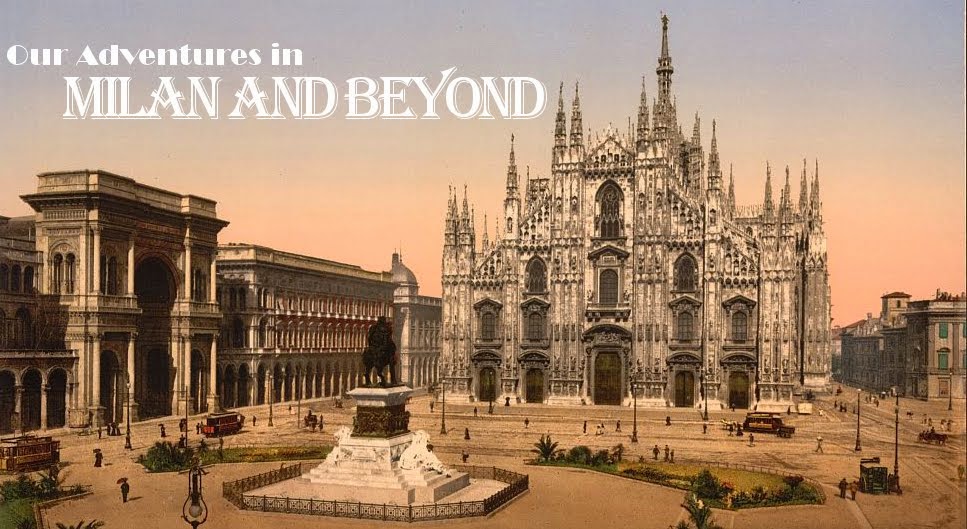The trip gave us the opportunity to figure out the train system. Our closest Metro stop is about 10 minutes from the apartment. Metro maps are easy to follow. (a reminder that Milan is a manageable city) Central Station was a little harder to navigate - we went up to the third level to be told that the ticket office was on the first level. Arriving in the ticket office we saw that it was necessary to take a number for service. We would have had to wait for 20 - 30 minutes to purchase a ticket (the train ride to Pavia would only take about 30 minutes). We quickly realized that we could purchase the tickets at one of a number of machines. Once we determined which train to take (the number was not on the ticket) we returned to the third level and easily found the train. As we left the station, the landscape quickly changed from urban to suburban and then to cultivated fields -- a very short, pleasant ride. This area surrounding Pavia, part of the agriculturally rich Po valley, is a source for wine, rice, cereal and dairy products.
A bit of history: There is evidence that Pavia existed in PreRoman times and was a castrun under the Roman Empire. After the Lombard conquest in 57, it became the capital of the Lombard Kingdom. Charlemagne took it in 774. In competition with Milan it yielded to the domination of the Visconti family in 1359. It then was occupied by the Spanish, thhe Austrians, the French, and then again the Austrians until Italian independence in 1859. Pavia's history is a reminder of the history of northern Italy.
Arriving in Pavia, we walked from the train station to the main square, Vittoria Piazza, where we sat outside enjoying the beautiful weather and had lunch. Generally lunches can be panini, inslate, or pasta. Insalate are always a treat, primarily because the produce is so fresh. (We continue to rave about the tomatoes and the varieties of lettuce). Our next stop was the University of Pavia, one of the oldest in Europe, founded in 1361. The buildings were originally part of a hospital. There were very few people there. (We understand that throughout Italy students go home on the weekends. One explanation that we heard is there are no facilities to wash clothes in the dorms so the need to return home .I also think a number of students are in school close to their homes)
As we left the University we noticed an international street fair -- foods from around the world. We were overwhelmed with the variety and quality of the food being offered. We focused on Italian cheeses and purchased a spectacular pecorino with fig.
We wandered through a residential neighborhood and found the Castello Visconteo built in 1360 and now houses the city's main art museum. Knowing we would return to Pavia, we didn't go in and continued to the Duomo begun in 1488 and then to the Strada Nuova, a fashionable shopping street.
We then walked along Strada Nuova to the Ticino River to see the Ponte Coperto, a Renaissance covered bridge. With such beautiful weather we were surrounded by cyclists, children playing, babies in strollers and lots of people enjoying a weekend outing. With its cobbled streets and piazzas Pavia is a lovely town.
 |
| University of Pavia, founded 1437 |
 |
| Cortile degli Spiriti Magni - statues of most important scholars and alumni of University of Pavia |
 |
| Strada Nuova |
